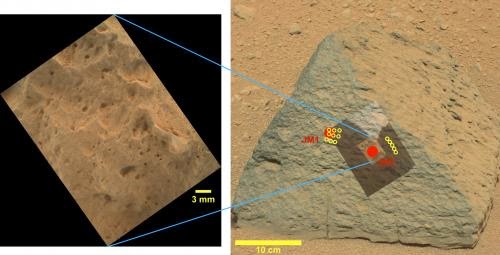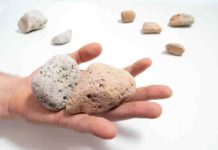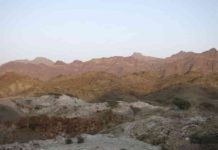
CORVALLIS, Ore. – The first rock that scientists analyzed on Mars with a pair of chemical instruments aboard the Curiosity rover turned out to be a doozy – a pyramid-shaped volcanic rock called a “mugearite” that is unlike any other Martian igneous rock ever found.
Dubbed “Jake_M” – after Jet Propulsion Laboratory engineer Jake Matijevic – the rock is similar to mugearites found on Earth, typically on ocean islands and in continental rifts. The process through which these rocks form often suggests the presence of water deep below the surface, according to Martin Fisk, an Oregon State University marine geologist and member of the Mars Science Laboratory team.
Results of the analysis were published this week in the journal Science, along with two other papers on Mars’ soils.
“On Earth, we have a pretty good idea how mugearites and rocks like them are formed,” said Fisk, who is a co-author on all three Science articles. “It starts with magma deep within the Earth that crystallizes in the presence of 1-2 percent water. The crystals settle out of the magma and what doesn’t crystallize is the mugearite magma, which can eventually make its way to the surface as a volcanic eruption.”
Fisk, who is a professor in OSU’s College of Earth, Ocean, and Atmospheric Sciences, said the most common volcanic rocks typically crystallize in a specific order as they cool, beginning with olivine and feldspar. In the presence of water, however, feldspar crystallizes later and the magma will have a composition such as mugearite.
Although this potential evidence for water deep beneath the surface of Mars isn’t ironclad, the scientists say, it adds to the growing body of studies pointing to the presence of water on the Red Planet – an ingredient necessary for life.
“The rock is significant in another way,” Fisk pointed out. “It implies that the interior of Mars is composed of areas with different compositions; it is not well mixed. Perhaps Mars never got homogenized the way Earth has through its plate tectonics and convection processes.”
In another study, scientists examined the soil diversity and hydration of Gale Crater using a ChemCam laser instrument. They found hydrogen in all of the sites sampled, suggesting water, as well as the likely presence of sulphates. Mars was thought to have three stages – an early phase with lots of water, an evaporation phase when the water disappeared leaving behind sulphate salts, and a third phase when the surface soils dried out and oxidized – creating the planet’s red hue.
“ChemCam found hydrogen in almost every place we found iron,” Fisk said.
The third study compared grains of rock on the surface with a darker soil beneath at a site called the Rocknest Sand Shadow. Some of the sand grains are almost perfectly round and may have come from space, Fisk said.
Note : The above story is based on materials provided by Oregon State University










